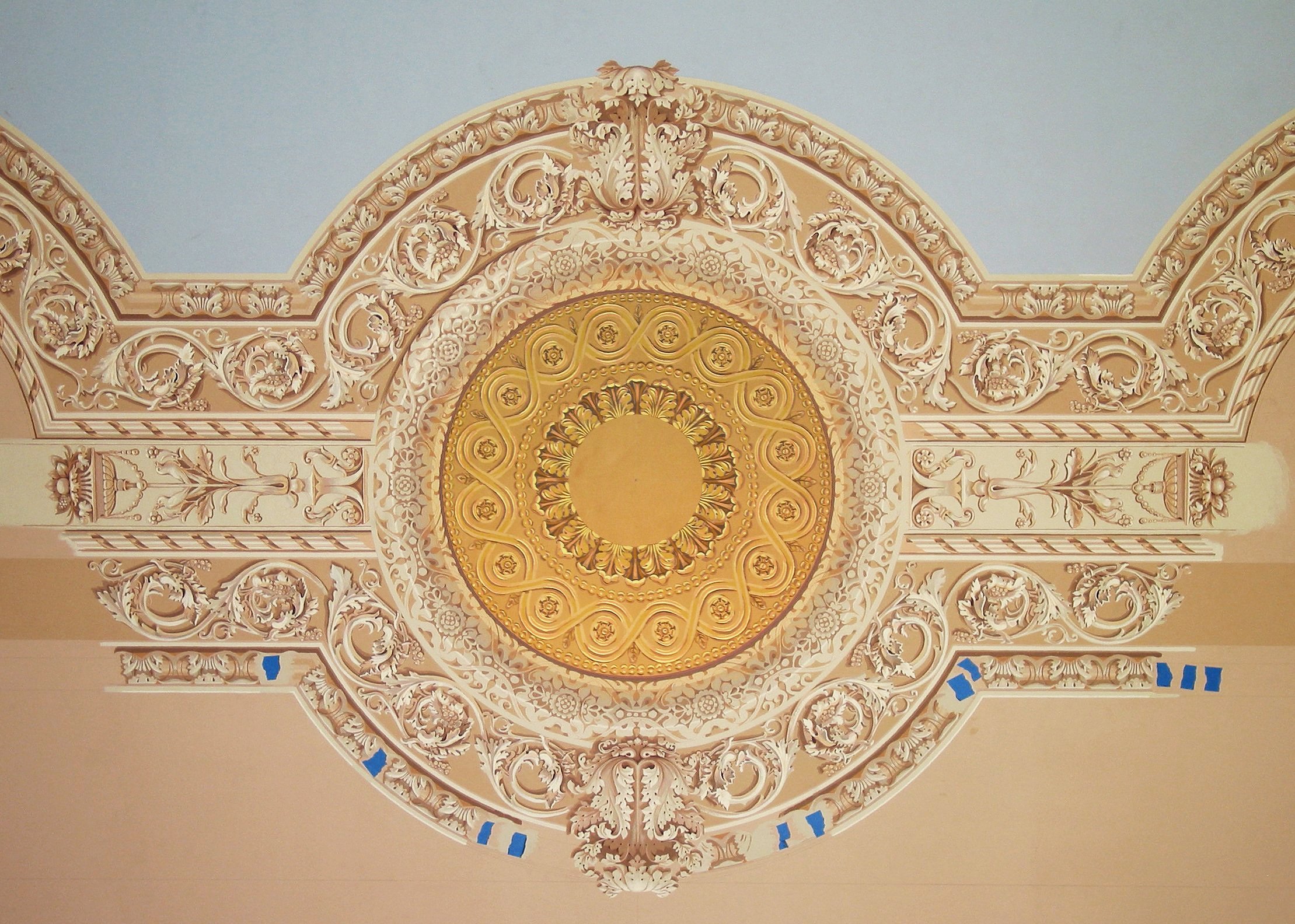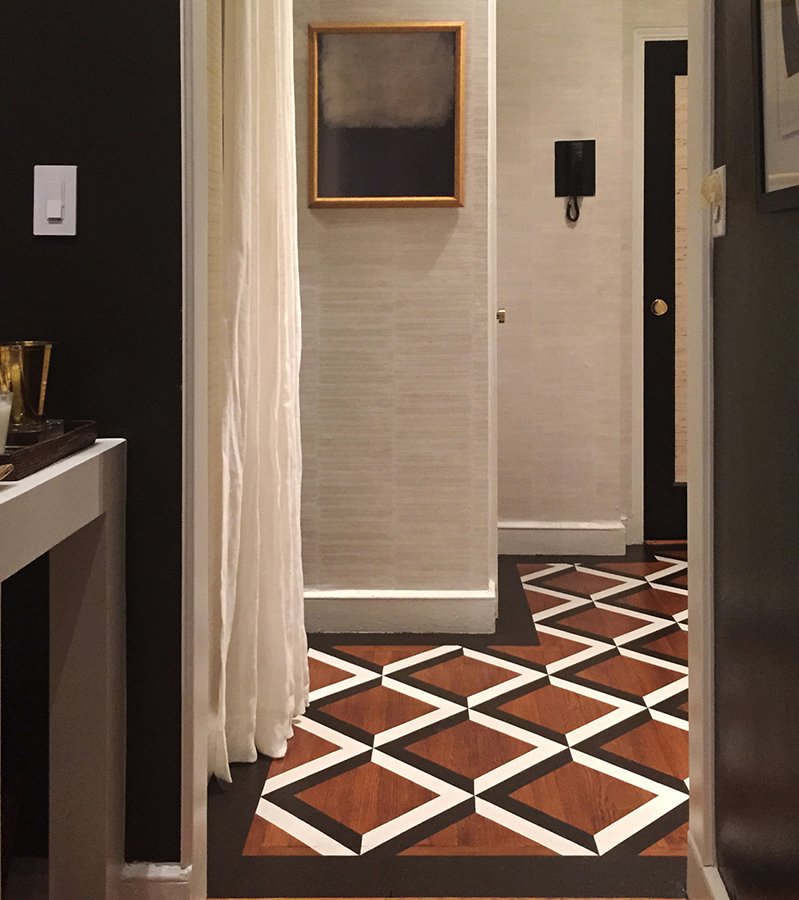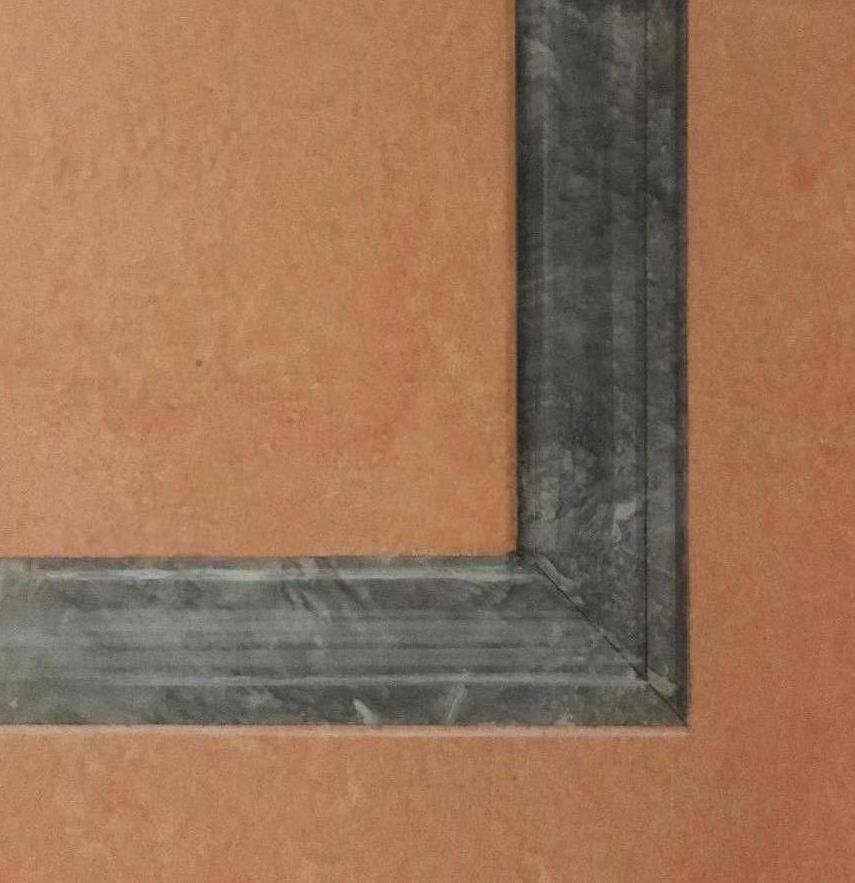
TROMPE L’OEIL
French for "deceive the eye," Trompe L'oeil painting was found on the walls of Pompeian Italy in AD 70 and reached its zenith in the extraordinarily realistic Dutch Golden Age 17th century still lifes of Willem Heda and Jan de Heem. In the 19th century the American William Harnett again brought this genre to dazzling perfection. The art of trompe l'oeil is personified in the ancient Greek story of a contest between two artists, Zeuxis and Parrhasius. Zeuxis painted grapes so realistically that birds flew down to peck at them. It is always tittilating to be deceived by these images and the tradition continues to this day. In our field we employ trompe l'oeil painting to depict moldings, architecural details, grotesques, doors, windows, objects, animals, anything to trick the eye and enliven a space.
Trompe L'oeil Neoclassical Motif Door; 12K White Gold Gilded Chest
Neoclassical Trompe L'oeil Motif
Trompe L'oeil Gold Medallion
Trompe L'oeil Gold Motif
Trompe L'oeil Neoclassical Motif on Venetian Plaster
Trompe L'oeil Neoclassical Motif on Venetian Plaster
Trompe L'oeil Neoclassical Motif on Venetian Plaster
Trompe L'oeil Neoclassical Motif on Venetian Plaster
Detail of a Trompe L'oeil Cable On Hallway Wall
Trompe L'oeil Cable On Hallway Walls
Trompe L'oeil Recessed Panels
Trompe L'oeil Recessed Panels
Trompe L'oeil Geometric Patterned Floor
Trompe L'oeil Geometric Patterned Floor
Trompe L'oeil Fireplace
Trompe L'oeil Fireplace
Trompe L'oeil Moldings
Trompe L'oeil Moldings
Trompe L'oeil Moldings
Trompe L'oeil Moldings
Tompe L'oeil 22k Gold Medallions and Lining on a Frieplace
Trompe L'oeil Motifs for a Young Girls Room
Trompe L'oeil Motifs for a Young Girls Room
Trompe L'oeil Flowers and Ribbons on Drawers
Trompe L'oeil Parrots on Faux Limestone
Trompe L'oeil Hummingbird
Trompe L'oeil Crane
Trompe L'oeil Parrot on Faux Limestone
Palace Skateboard Store in Hollywood CA Trompe L'oeil Motifs and Cannabis Relief
Palace Skateboard Store in Hollywood CA Trompe L'oeil Cannabis Frieze
Palace Skateboard store in Hollywood CA Trompe L'oeil Motifs
Palace Skateboard Store in Hollywood CA Trompe L'oeil Meddalion
Trompe L'oeil Fuax Marble Molding
Trompe L'oeil Molding
Trompe L'oeil Mosaic on Faux Creme Marfil Stone
Trompe L'oeil Molding on Faux Marble
Trompe L'oeil Fluting on a Faux Marble Pedestal
Trompe L'oeil Fuax Marble Molding
Trompe L'oeil Mosaic
Trompe L'oeil Mosaic
Two toned glazed ceiling with trompe l'oeil molding
Trompe L'Oeil dumbell for a personal gym
Trompe L'Oeil dumbells for a personal gym
Trompe L'Oeil Dumbell for a Personal Gym











































